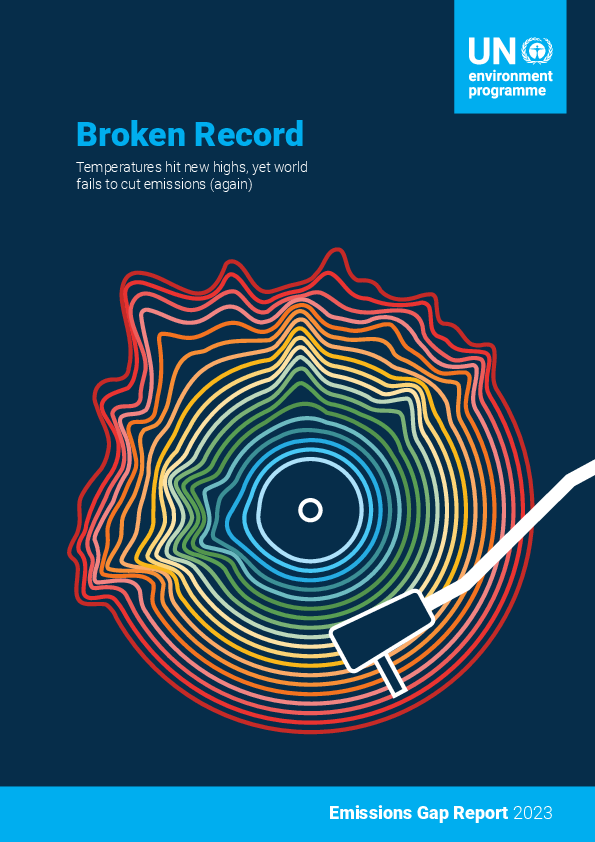 Read this article in French
Read this article in French- Share this article
- Subscribe to our newsletter
Emissions Gap Report 2023
Current pledges under the Paris Agreement put the world on track for 2.5 to 2.9°C of global warming above pre-industrial levels this century. This is the finding of the Emissions Gap Report 2023: Broken Record – Temperatures hit new highs, yet world fails to cut emissions (again), published by the UN Environment Programme (UNEP) in November 2023 ahead of the climate summit in Dubai, United Arab Emirates.
The report finds that global low-carbon transformations are needed in order to deliver cuts to predicted 2030 greenhouse gas emissions (GHG) of 28 per cent for a 2°C pathway and 42 per cent for a 1.5°C pathway.
Up to the beginning of October this year, 86 days were recorded with temperatures over 1.5°C above pre-industrial levels. September was the hottest recorded month ever, with global average temperatures 1.8°C above pre-industrial levels.
Global greenhouse gas emissions reach new record
The report finds that global GHG emissions increased by 1.2 per cent from 2021 to 2022 to reach a new record of 57.4 gigatonnes of carbon dioxide equivalent (GtCO2e).
If mitigation efforts implied by current policies are continued at today’s levels, global warming will only be limited to 3°C above pre-industrial levels in this century. Fully implementing measures implied by unconditional Nationally Determined Contributions (NDCs) would put the world on track for limiting temperature rise to 2.9°C. Fully implementing conditional NDCs would lead to temperatures not exceeding 2.5°C above pre-industrial levels. All of these carry a 66 per cent chance.
These temperature projections are slightly higher than in the 2022 Emissions Gap Report, as the 2023 report includes a larger number of models in the estimation of global heating.
Carbon dioxide removal
The report finds that delaying GHG emissions reductions will increase future reliance on carbon dioxide removal from the atmosphere. Carbon dioxide removal is already being deployed, mainly through afforestation, reforestation and forest management. Current direct removals through land-based methods are estimated at 2 GtCO2e annually. However, least-cost pathways assume considerable increases in both conventional and novel carbon dioxide removal – such as direct air carbon capture and storage.
Achieving higher levels of carbon dioxide removal remains uncertain and is associated with risks regarding land competition, protection of tenure and rights, and other factors. Upscaling novel carbon dioxide removal methods is associated with different types of risks, including that the technical, economic and political requirements for large-scale deployment may not materialise in time.
(UNEP/ile)
Read more and download the report on the UNEP website





Add a comment
Be the First to Comment